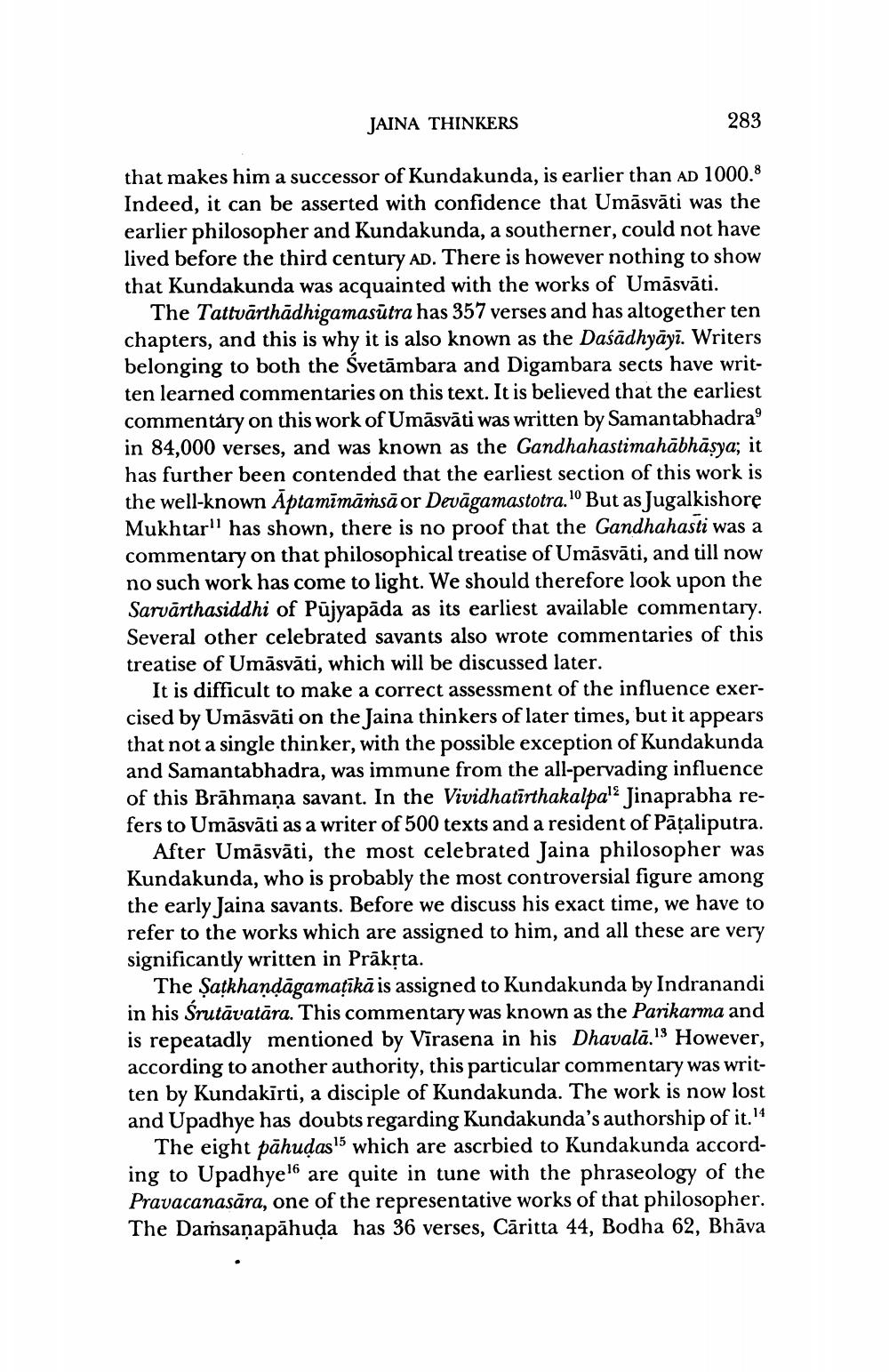________________
JAINA THINKERS
283
that makes him a successor of Kundakunda, is earlier than AD 1000.8 Indeed, it can be asserted with confidence that Umāsvāti was the earlier philosopher and Kundakunda, a southerner, could not have lived before the third century AD. There is however nothing to show that Kundakunda was acquainted with the works of Umāsvāti.
The Tattvārthādhigamasutra has 357 verses and has altogether ten chapters, and this is why it is also known as the Daśādhyāyi. Writers belonging to both the Svetāmbara and Digambara sects have written learned commentaries on this text. It is believed that the earliest commentary on this work of Umāsvāti was written by Samantabhadra in 84,000 verses, and was known as the Gandhahastimahābhāsya; it has further been contended that the earliest section of this work is the well-known btamīmāṁsā or Devāgamastotra." But as Jugalkishore Mukhtar" has shown, there is no proof that the Gandhahasti was a commentary on that philosophical treatise of Umāsvāti, and till now no such work has come to light. We should therefore look upon the Sarvārthasiddhi of Pujyapada as its earliest available commentary, Several other celebrated savants also wrote commentaries of this treatise of Umāsvāti, which will be discussed later.
It is difficult to make a correct assessment of the influence exercised by Umāsvāti on the Jaina thinkers of later times, but it appears that not a single thinker, with the possible exception of Kundakunda and Samantabhadra, was immune from the all-pervading influence of this Brāhmana savant. In the Vividhatirthakalpa' Jinaprabha refers to Umāsvāti as a writer of 500 texts and a resident of Pataliputra.
After Umāsvāti, the most celebrated Jaina philosopher was Kundakunda, who is probably the most controversial figure among the early Jaina savants. Before we discuss his exact time, we have to refer to the works which are assigned to him, and all these are very significantly written in Prākrta.
The Satkhandagamatīkā is assigned to Kundakunda by Indranandi in his Srutāvatāra. This commentary was known as the Parikarma and is repeatadly mentioned by Vīrasena in his Dhavalā.' However, according to another authority, this particular commentary was written by Kundakirti, a disciple of Kundakunda. The work is now lost and Upadhye has doubts regarding Kundakunda's authorship of it."
The eight pāhudas15 which are ascrbied to Kundakunda according to Upadhye16 are quite in tune with the phraseology of the Pravacanasāra, one of the representative works of that philosopher. The Damsanapāhuda has 36 verses, Càritta 44, Bodha 62, Bhāva




